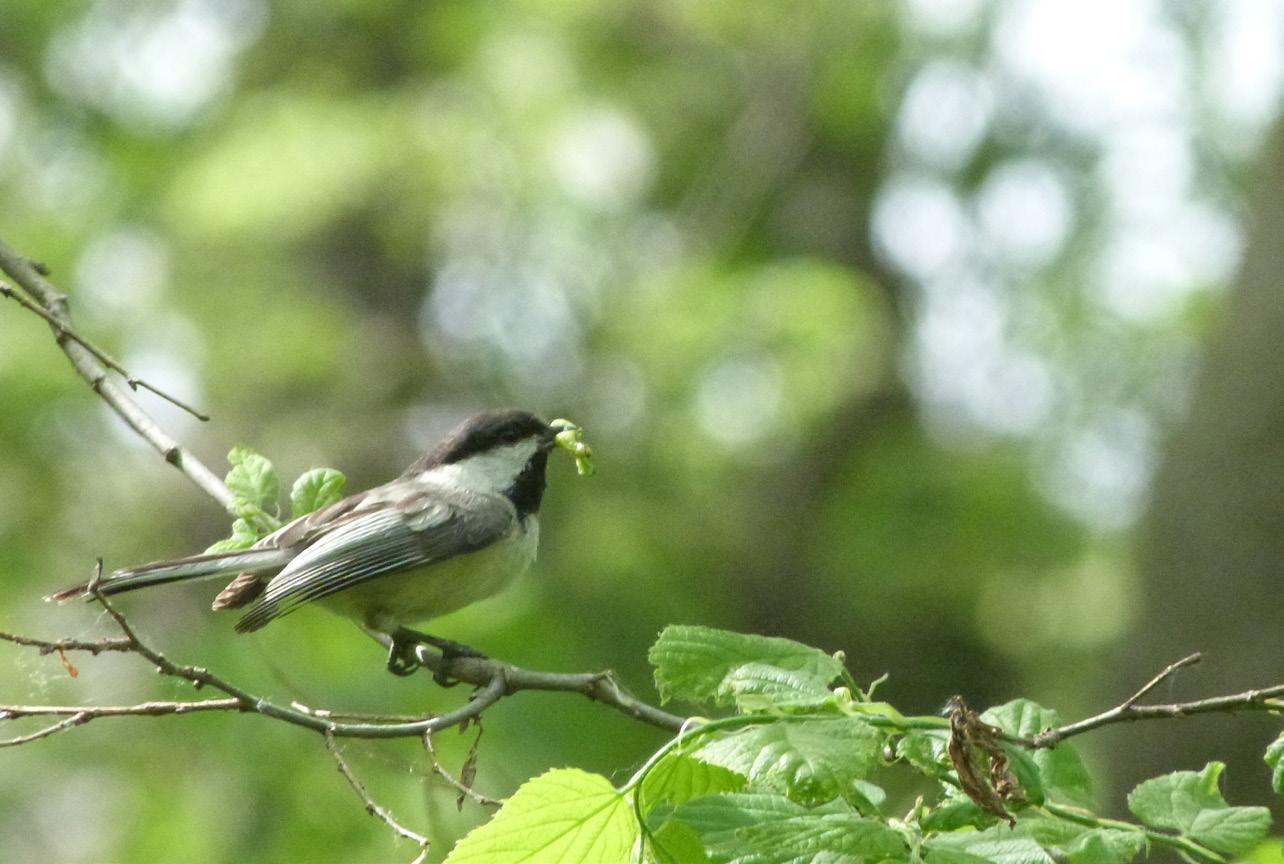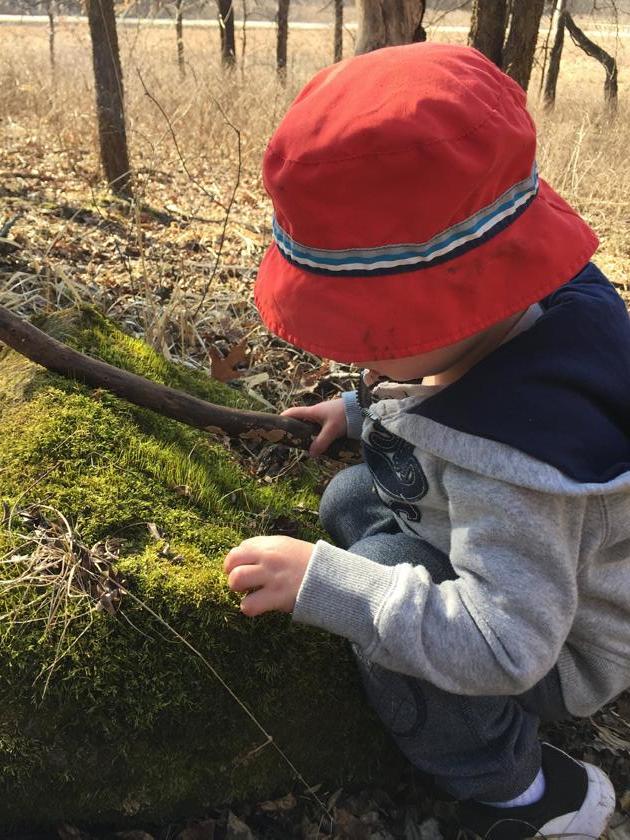
6 minute read
Calendar
Don’t panic! We didn’t forget about Nature Camps. Details are still being planned to ensure our offerings align with COVID-19 best practices. Nature Camp info will be posted on our website by
the end of April and online registration will open on Monday, May 3 at 6:00 p.m.
Advertisement
— CALENDAR OF EVENTS —
Date Time Event Location
May 3 4:00 p.m. Wildflower Walk McFarland Park
May 4 7:30 a.m., 12 p.m., & 4:30 p.m. Bird Day Hikes May 4 9:00 a.m. Walk the Trails McFarland Park Robison Wildlife Acres
May 4 4:30 p.m.
Nature Play: Pond Scooping Tedesco Environmental Learning Corridor
May 5 May 5 May 6 9:00 a.m. 1:00 p.m. 1:30 p.m. Weedin’ Out Wednesdays Nature Adventure Wednesdays Wildflower Walk TBD McFarland Park Robison Wildlife Acres
May 8 May 10 May 10 May 10 May 11 May 11 May 12 May 12 TBD 9:00 a.m. 4:00 p.m. 5:30 p.m. 9:00 a.m. 4:30 p.m. 9:00 a.m. 1:00 p.m. World Migratory Bird Day Celebration Discovery Hike Wildflower Walk TBD McFarland Park McFarland Park
Story County Conservation Board Meeting Walk the Trails Zoom McFarland Park
Nature Play: Pond Scooping Tedesco Environmental Learning Corridor Weedin’ Out Wednesdays TBD
Nature Adventure Wednesdays McFarland Park
May 13 May 13 May 13 May 15 May 17 9:00 a.m. 2:00 p.m. 7:00 p.m. 7:30 p.m. 9:00 a.m. Nature Near You! Celebrate Frog Jumping Day Evening Prairie Walk FLOAT V Reunion Campfire Nature Near You!
Tedesco Environmental Learning Corridor McFarland Park Doolittle Prairie McFarland Park Hertz Family Woods & Nature Preserve
May 17 May 18 1:00 p.m. 9:00 a.m. Nature Near You! Walk the Trails
Tedesco Environmental Learning Corridor Hickory Grove Park
May 18 May 18 12:30 p.m. Discovery Hike 4:00 p.m. Nature Near You! McFarland Park Christiansen Forest Preserve
May 19 9:00 a.m. Weedin’ Out Wednesdays
TBD May 19 1:00 p.m. Nature Adventure Wednesdays Tedesco Environmental Learning Corridor May 24 9:00 a.m. or 1:30 p.m. Discovery Hike McFarland Park May 26 9:00 a.m. Weedin’ Out Wednesdays TBD May 26 1:00 p.m. Nature Adventure Wednesdays Hickory Grove Park May 28 - July 5 Story County Step Out Into Summer county-wide! May 31 Story County Conservation Offices Closed June 5 10:00 a.m. National Trails Day Workday Tedesco Environmental Learning Corridor June 14 5:30 p.m. Story County Conservation Board Meeting Zoom June 16 10:00 a.m. or 1:00 p.m. Try Kayaking West Peterson Park June 24 7:00 p.m. Evening Prairie Walk Doolittle Prairie July 5 Story County Conservation Offices Closed July 12 5:30 p.m. Story County Conservation Board Meeting Zoom July 19 6:00 p.m. Advanced Stand Up Paddle Boarding West Peterson Park July 22 7:00 p.m. Evening Prairie Walk Doolittle Prairie July 26 6:00 p.m. Advanced Stand Up Paddle Boarding Hickory Grove Park
Season by Season
Photo by Seth Warburton
As the climate changes and we experience a warmer, wetter, wilder Midwest—more prone to extremes of drought, heat, and floods—I’m searching for the meaningful rhythms of nature I want to protect, examples of resiliency from my family’s past, and hopeful solutions for the future.
If we look, it’s there. Our connection with the cycles of nature. The challenge is attention.
The first breath of thaw in late winter focuses my attention on spring. This is the season of anticipation: snow turns to slush to mud. The smell of soil released from ice. Moss greening into a glow against old leaves and gray bark.
By spring 50 degrees feels like t-shirt weather. Sunlight through bare tree branches a blessing. My family goes to the forest, searching for the first bloom: hepatica. Each flower rises on a single stem dressed for the weather in a downy covering of hairs. Soon there are bunches and bouquets, the forest rejoicing in spring. Other signs arrive in concert with the flowers—the calls of chorus frogs, the first red-winged blackbirds—but it’s the wildflowers we attend most closely, our ritual. We can’t resist snapping photos year after year. Mixed in with pictures of my family growing older each year, they appear like punctuation: spring!

From one year to another our hepatica photos look identical, like reliable old friends. But something is changing. More and more often spring temperatures are coming early. Other years we experience false spring— unusually warm temperatures followed by a return to cold that can freeze buds and blossoms. Spring is becoming increasingly unpredictable. and leaf out in response to temperature. Wildflowers bloom. Bugs emerge to feed on and pollinate the plants. Bird migration and breeding is partly timed to the expected availability of food, often insect hatches. If the plants and bugs are early and the birds are too late, the birds miss out on critical food resources. Scientists call events like these mismatches and already see them happening.
These rhythms matter. I take my kids to the forest in spring because my parents took me. My grandpa’s morel hunting stick hangs on my parents’ wall, smoothed brown through many seasons of use. We walked the woods hunting for morel mushrooms. The trees furred a low sandy ridge on land my grandfather farmed. Slow steps, eyes to the ground, attention, patience.
I never had enough patience. Near the field access, an enormous spreading lilac marked the site of a home long gone. I snaked my small body through the shrubs, hands in cool dirt, shimmying around stems to a hollow center—a dim cathedral roofed with clouds of blossom. And at its heart a huge yellow morel, taller than my hand. I don’t know if this memory is true or invented.
Folk wisdom says to hunt morels when the lilacs are ready to flower, when oak leaves are the size of squirrel ears, when mayapple leaves open up. These signs reflect the right springtime cues like soil temperature for both the plants and mushrooms. They also reflect human attention to the rhythms of nature—patterns noticed and passed across generations.
It’s no surprise that as a naturalist I value protecting natural areas. In the context of climate change, they provide refuge for wildlife under stress, buffer communities from flooding. and absorb carbon. Nature in towns and cities matters too. Urban tree canopies and parks provide cooling effects for surrounding neighborhoods and capture storm water. Trees and other native plantings in yards and neighborhoods become part of the impact on the whole community. We need to think of

But natural areas can do even more. My daughter is a solstice baby, born on the day of longest light. My son celebrates his birthday only four days later. I want these children—who came into the world with the turning of a season—to attend to the cycles of nature and see how they are changing. For them to develop this attention, they need experience year by year, month by month, day by day exploring and playing outside.
Access to natural spaces in our neighborhoods and communities helps us build the relationship we need to work toward climate change solutions. How do we provide natural spaces that welcome as many as possible? How do we provide experiences or mentoring for those who want to begin connecting? We don’t have to have all the answers, but we do need to have the conversation. It starts with our community telling stories about what they love and hope we can protect through our common efforts to slow climate change. Rebekah Beall is a naturalist, originally from Indiana, who transplanted to Iowa through attending Iowa State’s Creative Writing and Environment program. She loves teaching about spiders, insects, and wildflowers.



